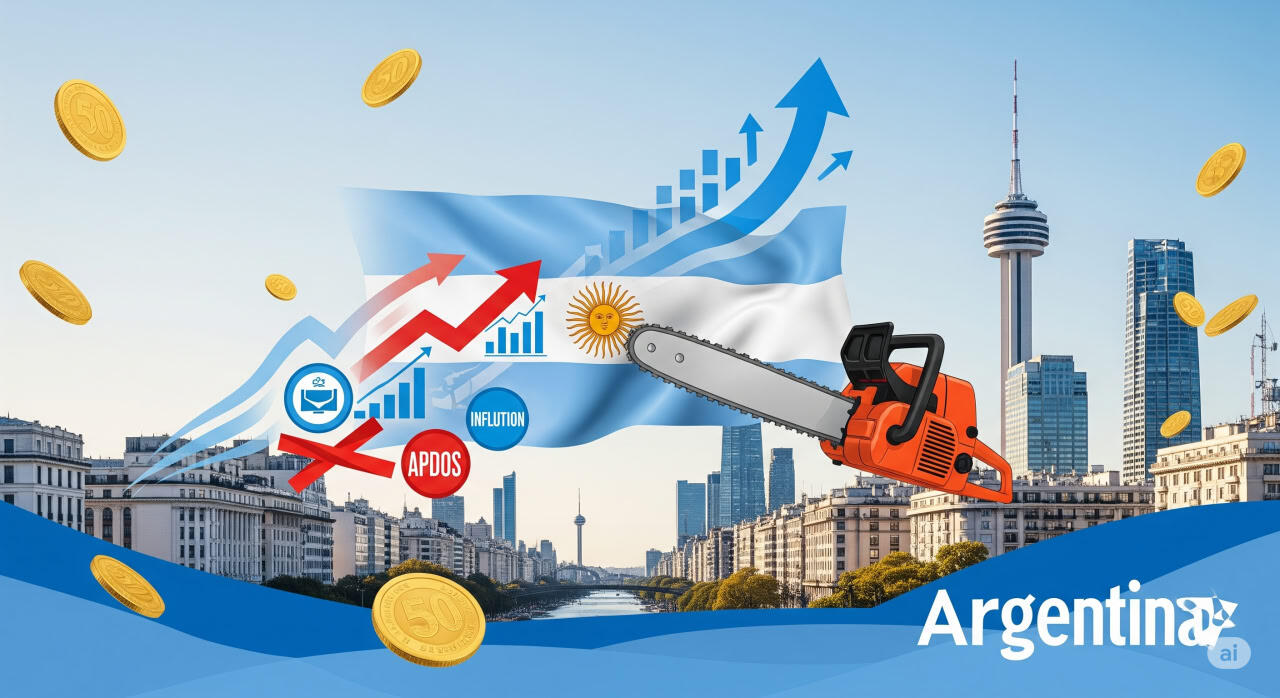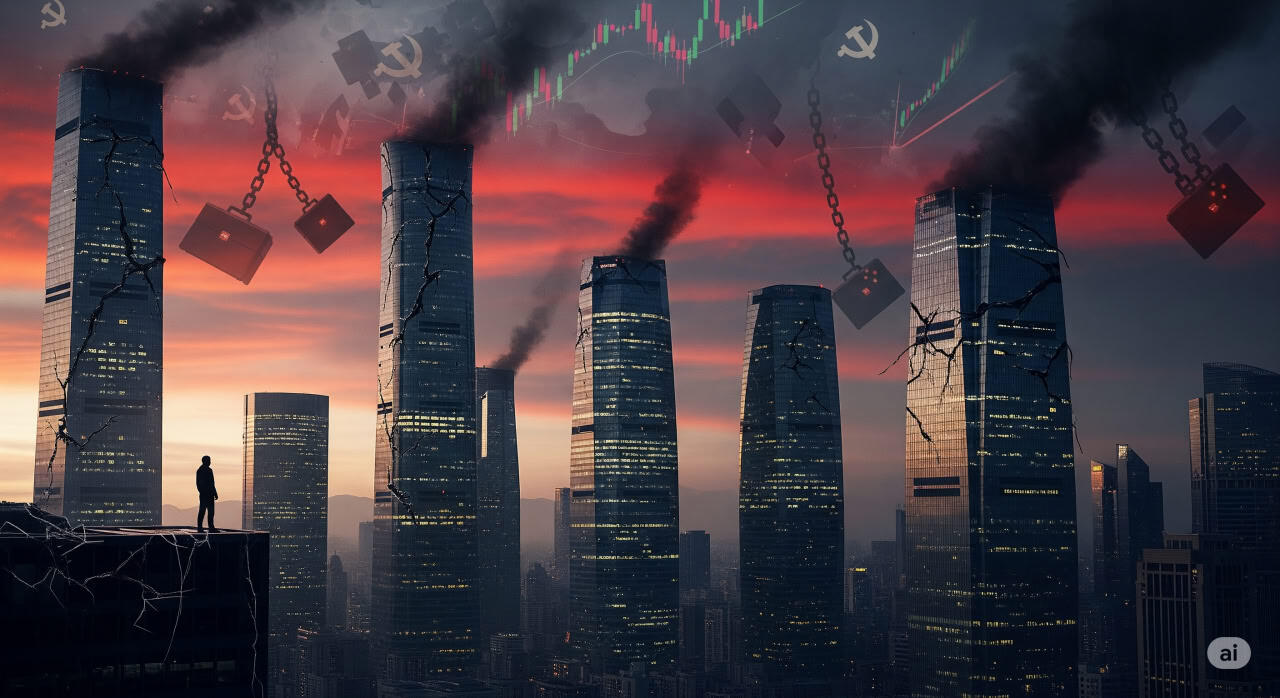Argentina Rises Again: Milei’s Shock Therapy and the Road to Recovery

Argentina’s Economic Revival: How Milei Turned Crisis into Growth in Just One Year
What if I told you that a country on the brink of total economic collapse—plagued by hyperinflation, crippling debt, and decades of mismanagement—could flip the script in under a year? Sounds like a fairy tale, right? But as we sit here on July 27, 2025, that’s exactly the story unfolding in Argentina under President Javier Milei. After two grueling years of recession, the nation’s GDP is now surging at an impressive 5.8% in the first quarter of 2025, outpacing even the most optimistic forecasts.en.cibercuba.com Hyperinflation, once a nightmarish 290% in April 2024, has cooled to around 43.5% by June 2025, with further declines expected.chathamhouse.org And for the first time in 14 years, Argentina posted a fiscal surplus in 2024, a trend that’s holding steady into this year as Milei slashes government spending and roots out inefficiencies.weforum.org
This isn’t just numbers on a spreadsheet; it’s a lifeline for a nation that’s endured over a century of boom-and-bust cycles. Argentina, once one of the world’s richest countries in the early 1900s, had fallen so far that by 2023, poverty engulfed 42% of its people, and inflation eroded savings overnight. Milei, the self-proclaimed “madman” economist with a chainsaw-wielding campaign style, promised radical change—and he’s delivering. But is this sustainable, or just a short-term high before another crash? In this deep dive, we’ll trace Argentina’s turbulent history, unpack Milei’s unorthodox strategies, celebrate the wins, confront the criticisms, and peer into what 2025 and beyond might hold. Along the way, I’ll share some thoughts on why this matters globally—because if a country like Argentina can pull off this turnaround, what does it say about economic orthodoxies worldwide?
I’ve followed emerging market stories for years, and Argentina’s always fascinated me. It’s a cautionary tale of how bad policies can squander natural wealth, but now, under Milei, it’s flipping the script. Rhetorical question: In a world where governments often cling to failed ideas, could Milei’s “shock therapy” be the wake-up call we all need? Let’s start at the beginning to understand just how far Argentina fell—and how Milei’s climbing back up.
A Century of Decline: From Global Powerhouse to Economic Pariah
To grasp the magnitude of Milei’s achievements, we need to rewind the clock. Argentina’s story isn’t one of inherent poverty; it’s a tragedy of squandered potential. Gaining independence from Spain in 1816 and adopting a U.S.-inspired constitution in 1853, the young republic quickly became a beacon of prosperity. By the late 1800s, its GDP per capita rivaled or even surpassed many European nations, peaking above the U.S. in some years. The secret? Vast fertile pampas producing beef and wheat for a hungry world, coupled with waves of European immigrants—over 4 million by 1914, many choosing Buenos Aires over New York.
Foreign investment poured in, building railroads and ports that turned Argentina into an export juggernaut. Buenos Aires earned the nickname “Paris of South America,” with grand boulevards and a thriving middle class. But cracks appeared early. The 1929 Great Depression hammered commodity prices, slashing exports from $1.5 billion to $561 million. Unemployment soared, sparking political instability. A 1930 military coup ushered in the “Infamous Decade,” marked by corruption and favoritism toward landowners, halting growth.
Post-WWII, Juan Perón’s 1946 presidency brought populism into play. Charismatic and beloved, Perón nationalized industries, expanded welfare, and capped prices to boost living standards. But these moves isolated Argentina from global trade booms, fostering inefficiency. Money printing to fund programs ignited inflation, peaking at 50% by 1950. Perón’s ouster in 1955 via coup led to decades of turmoil: More coups, leftist guerrillas, and right-wing dictatorships.
The 1976 “National Reorganization Process” junta was particularly brutal, waging a “Dirty War” that disappeared 30,000 dissidents. Economically, it borrowed heavily, ballooning debt to $45 billion by 1983—over 50% of GDP. Unemployment hit 18%, wages plummeted 36%. The 1982 Falklands War defeat forced democracy’s return, but stability eluded.
The 1980s and ’90s saw hyperinflation under Raúl Alfonsín—5,000% in 1989—triggering riots and food shortages. Carlos Menem’s 1989 privatization wave and peso-dollar peg stabilized things temporarily, but overvaluation crushed exports, leading to a $22 billion trade deficit (1992-1999). Debt soared, culminating in the 2001 default on $132 billion—the largest ever—and a “Great Depression” with 21% unemployment and 57% poverty.
Néstor Kirchner (2003-2007) sparked recovery with 8% annual growth, lifting 11 million from poverty via devaluation and commodity booms. But his wife Cristina Fernández (2007-2015) revived Peronist excesses: Nationalizations, price controls, and money printing pushed inflation to 40% (official lies claimed lower). Defaults followed in 2014.
Mauricio Macri (2015-2019) lifted controls, devaluing the peso 30%, but inflation topped 40%. Alberto Fernández (2019-2023) worsened it: COVID lockdowns shrank GDP 9.9%, debt hit 103% of GDP, inflation soared past 100% by 2023, poverty 40%. Nine defaults in a century, endless cycles—Argentina’s GDP per capita fell from 80% of U.S. levels in 1910 to 30% today.
Geopolitically, this isolated Argentina: Once a G20 player, it became a cautionary tale, defaulting while neighbors like Chile thrived on open markets. By 2023, Argentines were desperate for change—enter Milei.
Javier Milei: The “Madman” Economist with a Chainsaw Plan
Milei’s rise is as unconventional as his policies. Born in 1970 amid decline, he endured bullying (nicknamed “El Loco”) and alleged parental abuse, cutting ties temporarily. From a modest family—dad a bus driver—he pursued economics, earning degrees and teaching at universities. Stints at banks honed his growth expertise.
A turning point: Discovering Austrian economics in the 2000s, rejecting Keynesian intervention for free markets, minimal government, and central bank abolition. He became an anarcho-capitalist, viewing the state as a “criminal organization” thriving on “theft” via taxes and inflation.
Media catapulted him: By 2018, 235 TV appearances as a fiery critic of left-wing policies. Books like “The Libertarian’s Path” and “The End of Inflation” solidified his views. In 2021, his La Libertad Avanza party won 17% in Buenos Aires legislative elections. 2023 presidential run: Outsider status, anti-establishment rants, and chainsaw props (symbolizing cuts) resonated amid 200% inflation.
Winning 56% in runoff against Sergio Massa, Milei appealed to youth and middle-class frustrated by Peronism. His mantra: Less government, more freedom. Shock therapy: Cut spending from 40% to 25% of GDP, privatize, deregulate.
Geopolitically, Milei’s pro-West stance—aligning with U.S., Israel—contrasts predecessors’ China/Russia ties. In 2025, amid global shifts like Trump’s return, this bolsters Argentina’s appeal for FDI.
Reflections: Milei’s “madman” label? Genius or folly hinges on success, as he says. Boldness inspires, but radicalism risks backlash.
Shock Therapy in Action: Cuts, Deregulation, and Dollar Dreams
Milei’s playbook: Chainsaw government bloat. Fired 30,000+ federal workers (10% workforce), axed 13 agencies.upi.com Slashed spending 31% (10% GDP), yielding first surplus in 14 years.sites.lsa.umich.edu Deregulated: Cut 900+ rules, boosting rental supply 300%, dropping rents 40%.upi.com
Halted money printing, taming inflation from 290% to 43.5%.chathamhouse.org Plans: Abolish central bank, dollarize for stability (inspired by Ecuador/El Salvador). Tax reform: Slash to six types, cut rates.
Geopolitically, aligns with IMF loans (2025 disbursements tied to reforms).piie.com Withdrew from WHO, fought “wokeism.”
Challenges: Unemployment rose 1% initially; poverty spiked to 53% H1 2024 before falling to 37% H2.aljazeera.com Protests erupted, but calmed as growth kicked in.
My view: Short-term pain for long-term gain? Bold, but humane costs worry me.
The Results: Boom Amid Pain, Approval Holds
One year in (Dec 2024), but by July 2025: GDP up 5.8% Q1, projected 5.5% full year.ainvest.com Surplus sustained; debt service eases.piie.com Inflation down, private sector expands.
Approval: 50%+, higher than predecessors.upi.com Poverty drop lifted 7M.aljazeera.com
Geopolitically: Moody’s upgrade, FDI up.upi.com Inspires Latin America.
Criticisms: Opposition grows; affordability issues persist.aljazeera.com Mid-terms 2025 loom.piie.com
Reflections: Miracle? Yes, but fragile. If sustained, Milei redefines economics.
Future Prospects: Sustainability and Global Lessons
2025-2026: OECD 5.2%/4.3% growth.focus-economics.com Tax cuts, dollarization ahead.
Geopolitically: Model for Venezuela/Brazil? U.S. ties strengthen.
Concerns: Inequality, political backlash.chathamhouse.org Radicalism risks reversal.
Conclusion: Milei’s breaking cycles. Genius or madman? Success decides. Argentina’s hope inspires—proof bold change works.



